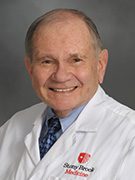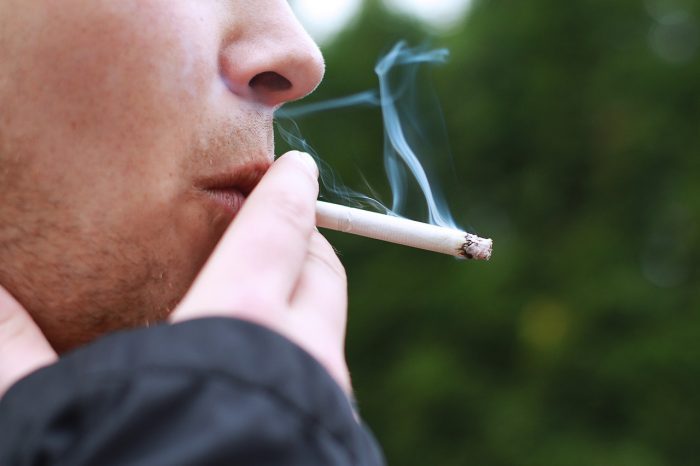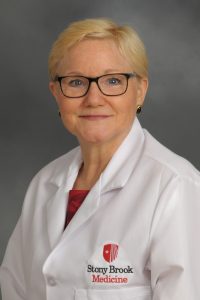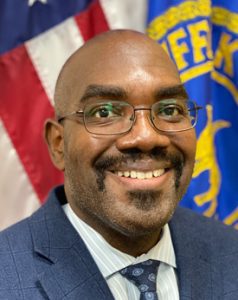By Daniel Dunaief
Decades ago, doctors endorsed cigarette smoking, promoting it in advertisements. That was back in the 1950’s, in the decade after the U.S. government shipped cigarettes to members of the armed forces during World War II.
On Jan. 11, 1964, Surgeon General Luther Terry released a landmark report that showed a nine to 10-fold higher risk of lung cancer for smokers compared with non smokers. At the time, about 40% of the adult population smoked. The report helped dramatically alter the perception of smoking. Indeed, a Gallup Survey from 1958 showed that 44% of Americans believed smoking caused cancer. By 1968, that number surged to 78%, according to a report from the National Institutes of Health.
Pulmonologist Dr. Norman Edelman, a professor of medicine at Stony Brook University and a core member of the program in public health at Stony Brook, celebrated the legacy of that landmark report, even as he urged ongoing efforts to reduce smoking.

“It was a momentous occasion,” said Dr. Edelman, who suggested that the number of deaths in the country would be even higher without this report.
“By the beginning of the 1960’s, the medical literature was pretty clear that smoking causes lung cancer” but the tobacco lobby fought against warnings about the hazards of smoking, Edelman said.
Dr. Gregson Pigott, Suffolk County Health Commissioner, described the report as the “first step towards protecting the American people from the deleterious effects of tobacco use.”
Adult smoking rates have fallen from about 43% in 1965 to about 11.5% in 2011, according to Dr. Pigott.
The report, which was followed by 34 studies from the CDCs Office of Smoking and Health on the health consequences of smoking, validated the concerns of organizations like the American Cancer Society and helped reduce the prevalence of a habit that can have significant and fatal consequences.
“Smoking levels in teenagers are going down,” said Dr. Edelman. “It’s beginning to show up in the health effects” with lung cancer declining in men and plateauing in women.
Lung cancer deaths in men have fallen to 25.5 per 100,000 in 2021 from 65 per 100,000 in 1990, according to Dr. Pigott. More recently, smoking exacerbated the threat from Covid. An analysis of 22,900 people published in BMC Public Health in 2021 showed that 33.5% of people with a history of smoking experienced disease progression, compared with 21.9% of non-smokers.
A ways to go
While smoking is not as prevalent as it had been in the 1960’s, it is still a killer, accounting for an estimated 480,000 deaths each year in the United States, according to the Centers for Disease Control and Prevention. That’s about one in five deaths each year.
“Smoking still kills more people than other preventable causes of death,” said Dr. Edelman.
Dr. Edelman recognized the severity of other problems like the opioid and overdose crisis. In 2023, the CDC estimates that over 112,000 people died from overdoses.
Still, even with a reduction in smoking, the number of people who are smoking is high enough that the public should continue to look for ways to cut back on the harmful habit.
Over 16 million people live with at least one disease caused by smoking and 58 million non smoking Americans are exposed to secondhand smoke, explained Dr. Pigott, citing CDC data. Second hand smoke causes 40,000 to 60,000 deaths per year in the country, while smoking-related illnesses, which combine direct medical expenses, lost productivity and second hand smoke exposure, cost over $300 billion per year.
Increasing the cost of cigarettes has helped serve as a deterrent, Dr. Edelman said.
Suffolk County operates a smoking cessation program, which provides behavior modification and supportive pharmaceuticals to medically eligible participants, Dr. Pigott explained in an email. A nurse practitioner oversees the cessation groups, which the county provides at no cost to participants, who also receive personalized follow-up.Stony Brook has several cessation resources. Students interested in smoking cessation can consult a student health care provider who will help them develop a program.
Prescription medications, which are covered under student’s health insurance, are available at a pharmacy after a consultation with a student’s health care provider.
As for vaping, Dr. Pigott described it as “highly addictive” and explained that its long-term effect is not yet fully understood.
The 2023 Annual National Youth Tobacco Survey found that more than 2.1 million youth currently use e-cigarettes, which represents 7.7% of students in high school and middle school.
“We are especially concerned about the effect of vaping on young people,” Dr. Pigott added.








